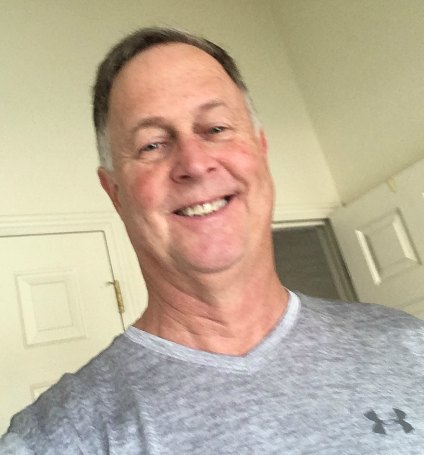
America is Actually Winning the War on Underage Drinking
Written by Jeff Rogers, Posted on
America is Actually Winning the War on Underage Drinking
Perhaps nine out of ten articles on the internet about underage drinking focus only on how bad the problem is nationwide. And to be sure, it is. The current problem in 2018 is very real. An estimated 7.4 million teens under the age of 21 reportedly drink alcohol and many of those to excess.1 That’s a little more than 11% of all adolescents in the U.S.
What you don’t hear about so much in the national news, though, is that the number of teens who drink in America has actually gone down over the last seven years…significantly. According to a report by the Substance Abuse and Mental Health Services Administration (SAMHSA) on underage drinking in 2010, an estimated 10 million teens drank alcohol, with 6.5 million of those binge drinking and 2 million delving into heavy consumption. Unless my math is off, that’s a 2.6 million underage drinker decrease from 2010 to 2017,2 or an overall 26% reduction across the country.
From my perspective, as a parent and a public school educator, that’s perhaps the most important news of the last quarter-century. Unless you look for it like looking for a needle in a haystack, all you would know is continued doom and gloom for generations of teens to come throughout eternity. And it isn’t true. The real news is the tide in the battle against underage drinking is turning. We as a nation are winning the war.
Good News from the 2017 National Institute on Drug Abuse Survey
According to the national 2017 survey called “Monitoring the Future,” conducted by the National Institute on Drug Abuse, there has been a steady decline in underage drinking amongst 8th, 10th and 12th graders nationally.3
Using Alcohol
*Eighth-grade students who reported drinking in the past month declined from 68% proportionally from 1991 to 2017.
*Tenth-grade students who reported drinking in the past month declined 54% proportionally over the same time period.
*Twelfth-grade students who reported drinking in the past month declined 39% proportionally over the same time period.
*Even college students (under 21 years of age) who reported drinking in the past month declined 17% over the same time period.
Binge Drinking
*Eighth-grade students who reported binge drinking in the last two weeks decreased 66% proportionally from 1991 to 2017.
*Tenth-grade students who reported binge drinking in the last two weeks decreased 53% proportionally over the same time period.
*Twelfth-grade students who reported binge drinking in the last two weeks decreased 44% proportionally over the same time period.
*College students who reported binge drinking in the last two weeks decreased 24% proportionally over the same time period.
Getting Drunk
*Eighth-grade students who reported getting drunk in the past month decreased 71% proportionally from 1991 to 2017.
*Tenth-grade students who reported getting drunk in the past month decreased 57% proportionally over the same time period.
*Twelfth-grade students who reported getting drunk in the past month decreased 40% proportionally over the same time period.
*College students who reported getting drunk in the past month decreased 23% proportionally over the same time period.
The War on Underage Drinking3,4
The U.S. Surgeon General declared war on the problem of underage drinking in America. With a meticulously outlined plan, the Surgeon General called on every sector of society to do their part in this battle. In conjunction with the National Institute of Health (NIH) and Substance Abuse and Mental Health Services Administration (SAMHSA), the Surgeon General proposed six key goals:
1. Foster changes in society that facilitates healthy adolescent development and that help prevent and reduce underage drinking.
2. Engage parents, schools, communities, all levels of government, all social systems that interact with youth, and the youth themselves in a coordinated national effort to prevent and reduce underage drinking and its consequences.
3. Promote an understanding of underage alcohol consumption in the context of human development and maturation that takes into account individual adolescent characteristics as well as environmental, ethnic, cultural, and gender differences.
4. Conduct additional research on adolescent alcohol use and its relationship to development.
5. Work to improve public health surveillance on underage drinking and on population-based risk factors for this behavior.
6. And work to ensure that policies at all levels are consistent with the national goal of preventing and reducing underage alcohol consumption.
Marching Forward Until the Problem of Underage Drinking is Gone
This country's response is the most likely reason there has been a turnaround of the problem of underage drinking. State, local, tribal and territorial government representative did what they were asked to do to help. Businesses, employers, health care systems, insurers, and clinicians rose to the challenge. Early learning centers, schools, colleges, and universities did what they had to do. Community-based agencies, non-profits, and faith-based organizations stood in the gap. And individuals and families joined in the fight too.
There is still so much to do. The Organization "Sobering Up" knows that and wants us all to keep doing what we've been doing, and then some. In line with the Surgeon General's original plan, Sober Up reminds us what we need to keep doing and what more we need to still take on.5
State, Tribal, Local and Territorial Governments:
- Maintain and enforce the age 21 minimum legal drinking age laws.
- Require installation of ignition interlocks in the vehicles of those convicted of alcohol-impaired driving.
- Implement or strengthen prescription drug monitoring programs.
- Facilitate controlled drug disposal programs, including policies allowing pharmacies to accept unwanted drugs.
- Implement strategies to prevent transmission of HIV, hepatitis and other infectious diseases associated with drug use.
Businesses and Employers:
- Implement policies that facilitate the provision of SBIRT (Screening, Brief Intervention, and Referral to Treatment) or offer alcohol and substance abuse counseling through employee assistance programs.
- Include substance use disorder benefits in health coverage and encourage employees to use these services as needed.
- Implement training programs for owners, managers, and staff that build knowledge and skills related to responsible beverage service.
Health Care Systems, Insurers, and Clinicians:
- Identify and screen patients for excessive drinking using SBIRT, implement provider reminder systems for SBIRT.
- Identify, track, and prevent inappropriate patterns of prescribing and use of prescription drugs and integrate prescription drug monitoring into electronic health record systems.
- Develop and adopt evidence-based guidelines for prescribing opioids in emergency departments, including restrictions on the use of long-acting or extended-release opioids for acute pain.
- Train prescribers on safe opioid prescription practices and institute accountability mechanisms to ensure compliance.
Early Learning Centers, Schools, Colleges, and Universities:
- Adopt policies and programs to decrease the use of alcohol or other drugs on campuses.
- Implement programs for reducing drug abuse and excessive alcohol use.
Community, Non-Profit, and Faith-Based Organizations:
- Support the implementation and enforcement of alcohol and drug control policies.
- Educate youth and adults about the risks of drug abuse (including prescription misuse) and excessive drinking.
- Work with media outlets and retailers to reduce alcohol marketing to youth.
- Increase awareness on the proper storage and disposal of prescription medications.
Individuals and Families:
- Avoid binge drinking, use of illicit drugs, or the misuse of prescription medications and, as needed, seek help from their clinician for substance abuse disorders.
- Safely store and properly dispose of prescription medications and not share prescription drugs with others.
- Avoid driving if drinking alcohol or after taking any drug (illicit, prescription, or over-the-counter) that can alter their ability to operate a motor vehicle.
- Refrain from supplying underage youth with alcohol and ensure that youth cannot access alcohol in their home.
1 “Underage Drinking Statistics,” National Survey on Drug Use and Health (NSDUH), 2017.
2 “Widespread Underage Drinking,” Addiction Center, 2018.
3 “Monitoring the Future Survey,” National Institute on Drug Abuse, 2017.
4 "The Surgeon General's Call to Action to Prevent and Reduce Underage Drinking," The Office of the Surgeon General, 2007.
5 "Preventing Drug Abuse and Excessive Alcohol Use," Sober Up, 2018.
